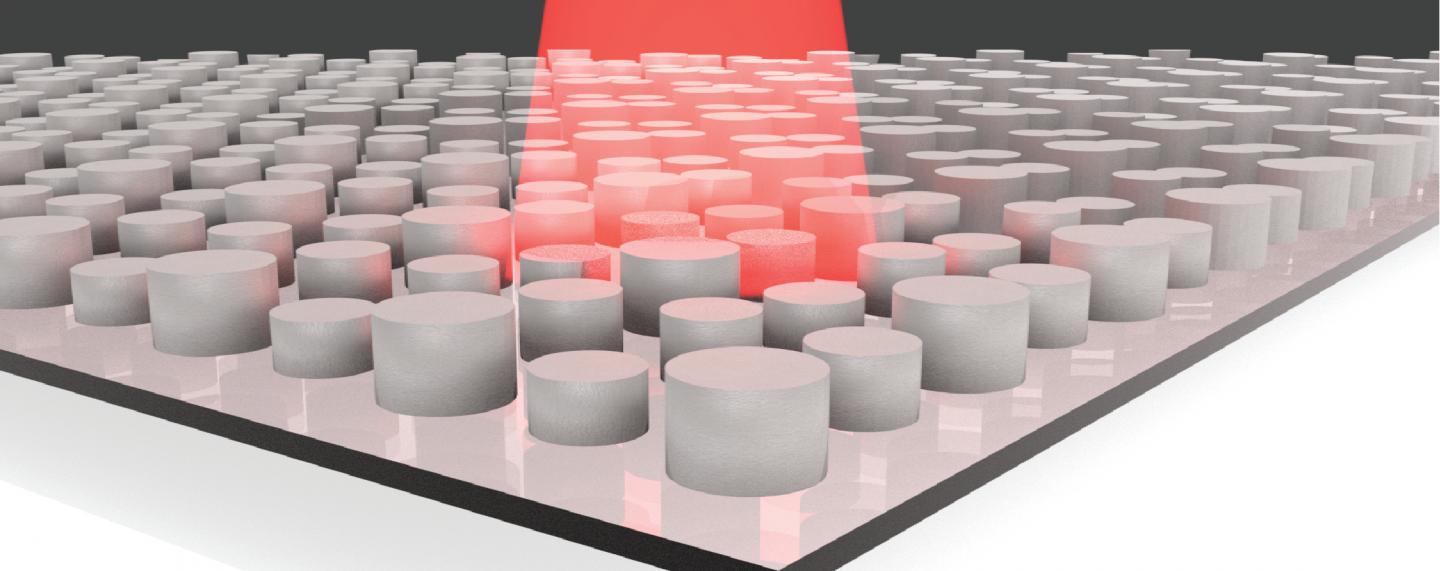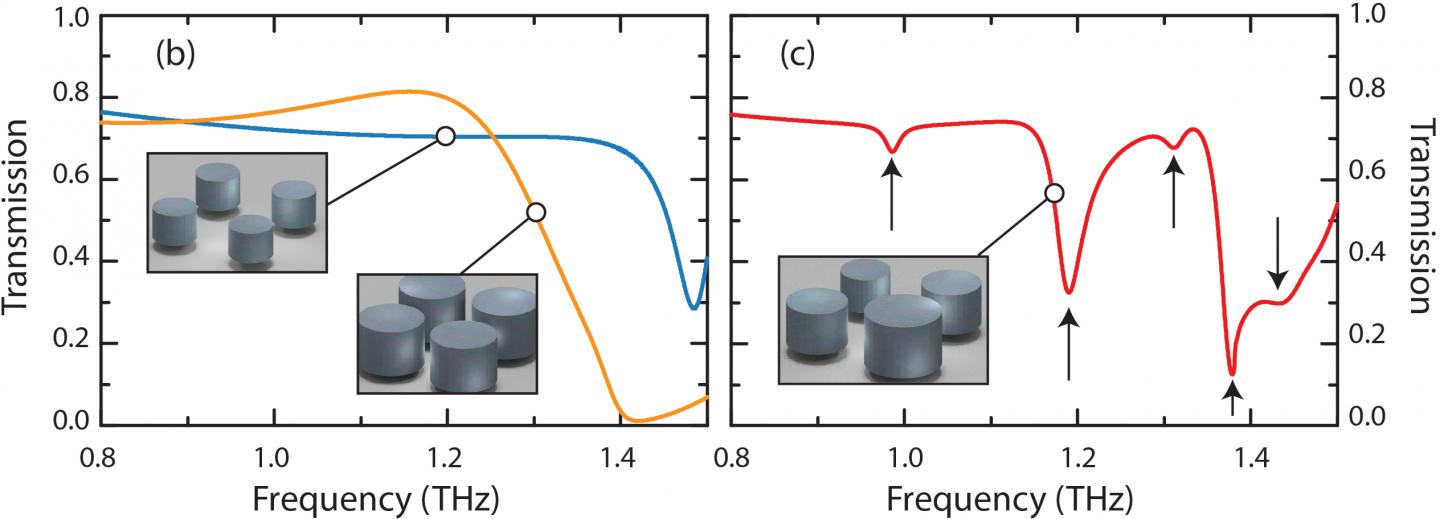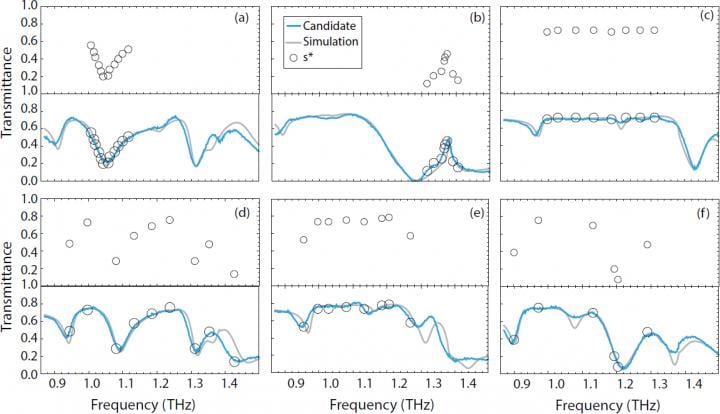
Machine Learning Speeds Metamaterial Design for Thermophotovoltaic Devices
A Duke University engineering team has used machine learning to design dielectric metamaterials that absorb and emit specific frequencies of terahertz (THz) radiation. Use of machine learning made it possible to calculate design requirements for the metamaterial in 23 hours — a process that without machine learning could have taken more than 2000 years, according to the team.
The THz metamaterial is built up from a 2 × 2 grid of silicon cylinders resembling a short, square Lego. Adjusting the height, radius, and spacing of each of the four cylinders changes the frequencies with which the metamaterial interacts.

An illustration of a dielectric metamaterial with infrared light shining on it. Courtesy of Willie Padilla, Duke University.
Calculating these interactions for an identical set of cylinders is a straightforward process that can be done by commercial software. However, working out the inverse problem of which geometries will produce a desired set of properties is more difficult. Each cylinder creates an electromagnetic field that extends beyond its physical boundaries, which can cause the cylinders to interact in an unpredictable, nonlinear way.
“If you try to build a desired response by combining the properties of each individual cylinder, you’re going to get a forest of peaks that is not simply a sum of its parts,” professor Willie Padilla said. “It’s a huge geometrical parameter space and you’re completely blind — there’s no indication of which way to go.”

When the frequency responses of dielectric metamaterial setups consisting of four small cylinders (blue) and four large cylinders (orange) are combined into a setup of three small cylinders and one large cylinder (red), the resulting response looks nothing like a straightforward combination of the original two. Courtesy of Willie Padilla, Duke University.
One way to find the correct combination would be to simulate every possible geometry and choose the best result. But even for a simple dielectric metamaterial, where each of the four cylinders can have only 13 different radii and heights, there are 815.7 million possible geometries. Even on the best computers available to the researchers, it would take more than 2000 years to simulate all the possible combinations. To speed up this process, the researchers created a neural network.
The height, radius, and radius-to-height ratio of each cylinder was entered into the neural network. The network, after it was trained, was able to accurately predict what the metamaterial’s frequency response spectrum would look like.
“Like a human, the network can gradually learn to make correct predictions by simply observing the commercial simulator,” professor Jordan Malof said. “The network adjusts its weights and biases each time it makes a mistake and does this repeatedly until it produces the correct answer every time.”

The researchers chose arbitrary frequency responses for their machine learning system to find metamaterials to create (circles). The resulting solutions (blue) fit well with both the desired frequency responses and those simulated by commercial software (gray). Courtesy of Willie Padilla, Duke University.
The researchers trained the machine learning algorithm with 18,000 individual simulations of the metamaterial’s geometry — about 0.0022% of all possible configurations. After it was trained, the neural network could produce highly accurate predictions in just a fraction of a second, the researchers said.
To solve the inverse problem of matching a geometry to a given frequency response, the researchers let the machine learning algorithm — which is nearly 1 million times faster than the modeling software used to train it — solve every one of the 815.7 million possible permutations. The machine learning algorithm accomplished this task in just 23 hours. Once the inverse problem was resolved, the researchers could use a search algorithm to match any desired frequency response to the library of possibilities created by the neural network. “We’re not necessarily experts on that, but Google does it every day,” Padilla said. “A simple search tree algorithm can go through 40 million graphs per second.”
To test their system, the researchers drew several frequency response graphs by hand and asked the algorithm to choose the metamaterial setup that could best produce each graph. They then ran the algorithm’s answers through the commercial simulation software and found that they matched up well.
The team is using its machine learning-enabled approach to designing dielectric metamaterials to engineer a thermophotovoltaic device that will create electricity from heat sources. Such devices work much like solar panels, except they absorb specific frequencies of infrared (IR) light instead of visible light. Current technologies radiate IR light in a wider frequency range than can be absorbed by the IR solar cell, which wastes energy. An engineered metamaterial tuned to that specific frequency could emit IR light in a much narrower band.
The research was published in Optics Express (https://doi.org/10.1364/OE.27.027523).
Published: September 2019